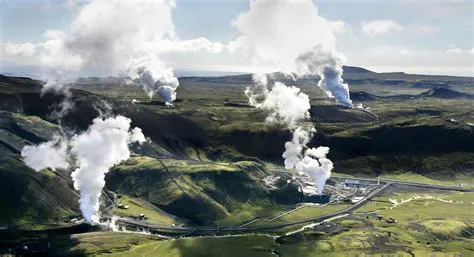One of the biggest challenges for the proponents of renewable energy is the idea of storage. It is obvious that whatever benefits wind and solar can provide, the fact they are intermittent is a problem. People tend to need energy throughout the day and, unfortunately, the wind doesn't always blow nor the sun shine.
So what is the solution?
The most logical choice is batteries. This is something that many companies are taking a look at. We know the cost has plummeted a great deal over the last decade, with the expectation of even further decline. That said, it is far from an ideal solution.
We know that scaling to the levels needed is a major problem. This is a situation we see with electric vehicles (EVs). While Tesla is doing a good job or ramping up, along with BYD in China, most are struggling. Even Tesla was constrained by battery capacity.
The bottom line is the odds of being able to store all the power the world needs in batteries are low. We simply will need to see too many manufactured, a problem when we consider the limitation (along with geopolitics) associated with raw materials that go into batteries.
Is there another way?
Some believe so.

Source
Geothermal as the Solution
Could geothermal be the solution?
This is something many discuss, although not in the context we are referring to here. A lot of people believe using the energy contained beneath us is an ideal solution to the energy problems we are confronted with.
It is what most people think about when they head the term "geothermal".
What if the same process could be used for energy storage?
The idea is to use facilities that are built not only to generate energy but also to supplement wind and solar.
A new proposal could solve those issues and bolster all three renewable technologies. The idea is simple—use advanced geothermal reservoirs to store excess wind and solar power in the form of hot water or steam, and bring up that heat when wind and solar aren’t available, to turn turbines for electricity.
“It would allow next-generation geothermal plants to break from the traditional baseload operating paradigm and earn much greater value as suppliers of wind and solar,” says Wilson Ricks, a graduate student in mechanical and aerospace engineering at Princeton University.
This is leading to the idea of Enhanced Geothermal Systems (EGS).
Enhanced geothermal systems (EGS) get around this geographical limitation by creating artificial reservoirs. Developers create fractures in hot, dry rock formations by drilling into or melting the rock, and then injecting water into the fissures. Production wells bring the heated water up for producing electricity. “For scales necessary to contribute to national or global electricity decarbonization, we need to be able to extract geothermal heat outside of conventional formations,” Ricks says.
It is an approach that has some promise. Of course, the natural question is that if the geothermal plant is built and the drilling taking place, why is wind and solar needed? From what I came across, the drilling technology is getting to the point where it is able to reach levels we only dreamt about a few decades back.
We will simply conclude that abundance in energy is required, that is why we will have the need for it all.
This is an interesting proposal. Over the years we saw a number of ways to use natural mechanisms as batteries. Thus far, none have materialized.
Sadly, it is likely this one will not either.
The World's Need For Energy
Simply put, the global energy needs are only increasing. Anyone who thinks this is not the case is completely delusional. We have a world that is moving forward technologically, meaning people want more of what is out there. Even those who are against fossil fuels are unwilling to give up their phones, laptops, and big screen televisions.
This is a situation that keeps playing out as economic advancement happens in different countries around the world. Those who have improving economies want what those in other countries have. It is a natural tendency.
For that reason, we saw the use of smartphones explode across the continent of Africa. While it is less expensive than a laptop or PC, it did get the people of those nations online and engaging with the Internet. It is not likely they are going to want to step backwards anytime soon.
It is why we have organizations predicting that we will need 50%-100% more energy by 2050 as compared to what we use now. Energy use is only going to increase, not decrease.
This means new methods of energy creation along with storage are required. So far, we haven't found much of a solution. A few decades from now, we will likely look back and realize how archaic we look today.
If you found this article informative, please give an upvote and rehive.

gif by @doze

logo by @st8z